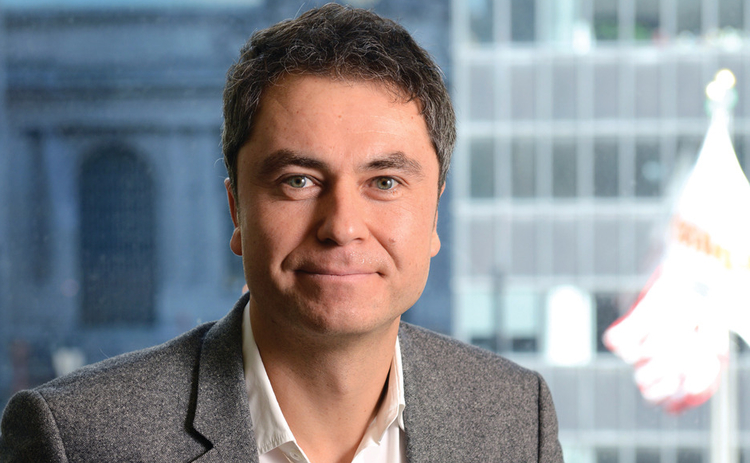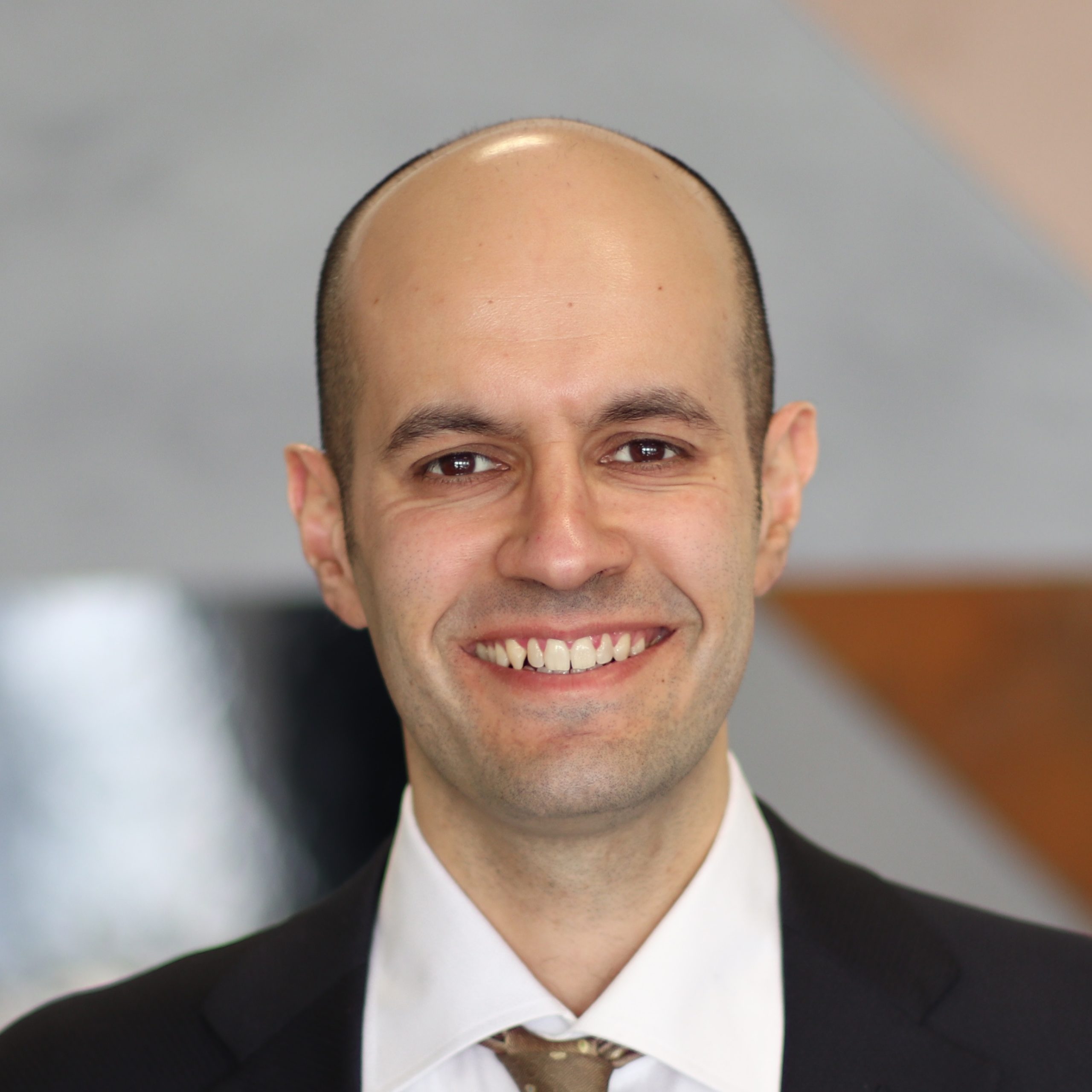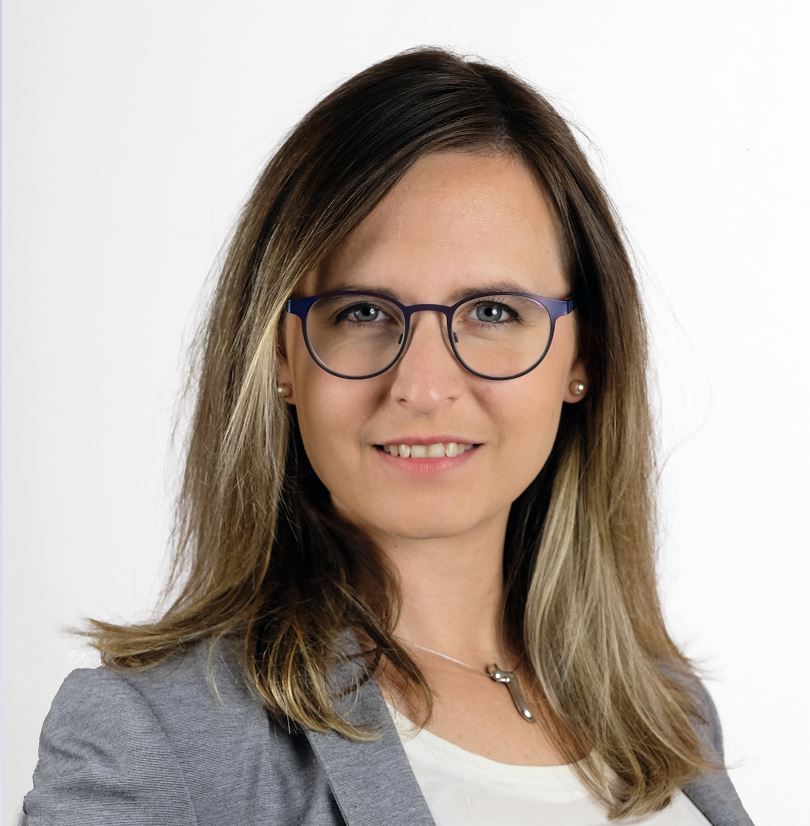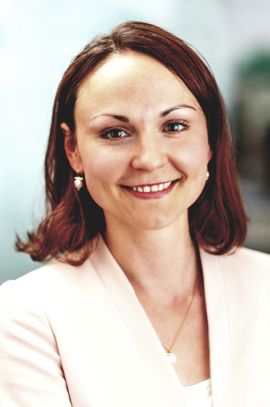2nd MathFinance Digital Conference
15 -16 March 2021
Venue:Webex
Follow us on Twitter
#MathFinanceConference

Testimonials
The MathFinance conference provides an excellent environment to learn about recent developments and networking with leading experts from both industry and academia
Enjoyable atmosphere, lots of networking, expert speakers, way to learn developments in the industry
The conference is a great opportunity to meet interesting people and develop new ideas on recent market trends. Special thanks to the organizers, they did a very good job

Dr. Jesper Andreasen
Head, Quant Research Development
Saxo Bank
American Option Pricing in a Tick -Calibration in a Click:
Andersen, Lake and Offengenden (2016) present a staggeringly fast and accurate method for the pricing of American options under constant parameter Black-Scholes assumptions. In this talk, we discuss the method, a few extensions including negative interest rates and prices, and its practical implementation and application to the estimation of implied dividends and volatility smiles from American option prices. Issues around absence of arbitrage and asynchronous data is also discussed.
Jesper Andreasen, aka the Kwant Daddy, is universal head of the SupaPhly Analytics team at Saxo Bank. Jesper’s career spans over 20 years in the derivatives industry including senior roles at General Re Financial Products, Bank of America, Nordea and Danske Bank. Jesper has twice received Risk Magazine’s quant of year award. He is an honorary professor of mathematical finance at the HC Ørsted Institute of Copenhagen University and holds a PhD in the subject from Aarhus University.

Prof. Dr. Rama Cont
Professor of Mathematics and Chair of Mathematical Finance
University of Oxford
Price Excursions: a Novel Approach to Dynamic Trading Strategies:
The risk and return profiles of a broad class of dynamic trading strategies, including pairs trading and other statistical arbitrage strategies, may be characterized in terms of excursions of the market price of a portfolio away from a reference level. We propose a mathematical framework for the risk analysis of such strategies, based on a description in terms of price excursions. We show that this approach leads to model-free insights on the risk of many dynamic trading strategies and relates their properties to the properties of price paths.
Finally, we describe a non-parametric scenario simulation method for generating paths whose excursion properties match those observed in empirical data. We illustrate this approach in the case of pairs trading strategies for equities.
-
Reference:
Ananova, Anna and Cont, Rama and Xu, Renyuan, Excursion Risk: https://ssrn.com/abstract=3723980
Rama Cont is Professor of Mathematics and Chair of Mathematical Finance at the University of Oxford, where he heads the Mathematical & Computational Finance Group.
His research focuses on stochastic analysis, stochastic modeling in finance, stress testing of financial institutions and systemic risk modeling.
He has previously held positions at Imperial College London, Columbia University, Sorbonne University and Ecole Polytechnique and served as a consultant to many central banks and financial institutions, including IMF, ECB, BIS, the NY Federal Reserve, CME, ICE and BMF-Bovespa.

Dr. Fabio Mercurio
Global head of Quantitative Analytics
Bloomberg
IBOR Transition: Looking Forward to Backward-Looking Rates:
In this talk, we define and model forward risk-free term rates, which appear in the payoff definition of derivatives and cash instruments, based on the new interest-rate benchmarks that will be replacing IBORs globally. We show that the classic interest-rate modeling framework can be naturally extended to describe the evolution of both the forward-looking (IBOR-like) and backward-looking (setting-in-arrears) term rates using the same stochastic process. We then introduce an extension of the LIBOR Market Model (LMM) to backward-looking rates. This extension, which we call generalized forward market model (FMM), completes the LMM by providing additional information about the rate dynamics between fixing/payment times, and by implying dynamics of forward rates under the classic money-market measure. Our FMM formulation is based on the concept of extended zero-coupon bonds, which proves to be very convenient when dealing with backward-looking setting-in-arrears rates. Thanks to this, not only the bonds themselves, but also the forwards and swap rates, along with their associated forward measures, can be defined at all times, even those beyond their natural expiries.
Finally, we complete the FMM by embedding into a Markovian HJM to allow for the generation of any forward-looking or backward-looking rates, and hence for the pricing of any exotic payoff or derivatives portfolio.
Fabio Mercurio is the global head of Quantitative Analytics at Bloomberg LP, New York. His team is responsible for the research on and implementation of cross-asset analytics for derivatives pricing, XVA valuations and credit and market risk. Fabio is also adjunct professor at NYU. He has jointly authored the book “Interest rate models: theory and practice” and published extensively in books and international journals, including 20 cutting-edge articles in Risk Magazine. Fabio is the recipient of the 2020 Risk quant of the year award

Prof. Antonis Papapantoleon
Professor of Mathematical Finance
TU Delft / NTUA
Deep learning in finance: an empirical investigation:
We are interested in using deep learning methods in order to compute option prices and implied volatilities. We investigate numerically the effects of various parameters (functions, rates, architecture) in the efficiency of these methods. This is joint work with Jonas Papazoglou-Hennig (TU München) and Giorgos Papagopoulos (NTU Athens).
Antonis Papapantoleon is a Professor of Mathematical Finance at TU Delft and an Affiliated Researcher at FORTH (Greece). He is also an Assistant Professor of Mathematics and the Director of the Financial Engineering and Mathematical Optimization Lab at the NTU Athens (on sabbatical leave). Before moving to Delft, he was a Juniorprofessor at TU Berlin, while his practical experience includes nine months at Commerzbank and two years at the Quantitative Products Laboratory, a joint venture between Deutsche Bank, HU Berlin and TU Berlin. He received his PhD in Mathematics from the University of Freiburg. His research interests include applications of Lévy process in finance, term structure modeling, and model-free methods in finance. His research has been published in leading journals such as Mathematical Finance, Mathematics of Operations Research, and the Transactions of the AMS, while he has co-edited a book on “Advanced Modelling in Mathematical Finance” (Springer, 2016).

Dr. Jack Jacquier
Department of Mathematics
Imperial College
A New Version of Roger Lee’s Formula:
We revisit the foundational Moment Formula proved by Roger Lee fifteen years ago. We show that when the underlying stock price martingale admits finite log-moments E[|log(S) |^q] for some positive q, the arbitrage-free growth in the left wing of the implied volatility smile is less constrained than Lee’s bound. The result is rationalised by a market trading discretely monitored variance swaps wherein the payoff is a function of squared log-returns, and requires no assumption for the underlying martingale to admit any negative moment. In this respect, the result can derived from a model-independent setup. As a byproduct, we relax the moment assumptions on the stock price to provide a new proof of the notorious Gatheral-Fukasawa formula expressing variance swaps in terms of the implied volatility.
Dr Jacquier is a Reader in Mathematics at Imperial College London and the Director of the MSc in Mathematics and Finance there. He holds an MBA from ESSEC Business School and a PhD in Mathematics from Imperial College London. He also consults regularly for banks and financial software companies. His research focuses on volatility modelling, with a special emphasis on rough volatility and applications of asymptotic methods in finance. He has co-edited a book on Asymptotic Methods in Finance and has published about 50 papers in Mathematical Finance and Applied Probability.

Dr. Arun Verma
Head, Quantitative Research Solutions Team
Bloomberg
Quantitative Trading Strategies & Asset Pricing Using Machine Learning:
Machine Learning (ML) and Predictive Analytics are now embedded in a broad variety of use cases in Quantitative Finance, from information extraction to sentiment analysis, from factor scoring models to complex instrument pricing methods, and from risk premium mining to portfolio construction models. ML is increasingly being used for asset pricing, e.g, option pricing or illiquid bond pricing where we need to learn the pricing function using data driven techniques as a further enhancement of methods rooted in stochastic modeling.
Quantitative traders and data scientists require automated ML & AI technologies to quickly extract actionable information from unstructured and increasingly non-traditional sources of data. We will illustrate the construction and use of such derived signals through novel use cases.
This talk will provide a brief overview of the following topics:
- The broad application of machine learning in finance: opportunities and challenges.
- Construction of scoring models and factors from complex data sets, including: News/Social Media, Supply Chain Network, Options Prices and ESG (Environmental, Social & Governance).
- Use of alternative data, such as extreme weather (i.e., cyclones, snowfall) to quantify the weather’s impact on companies that own retail stores and factories.
- Machine Learning techniques for asset pricing, enhancing complex quant models (i.e., PDE, Monte Carlo) for an efficient pricing of derivative securities and pricing of illiquid securities using data driven methods.
Arun heads the Bloomberg Quantitative Research Solutions Team within Quant Research group headed by Bruno Dupire. Dr Verma’s work initially focused on Stochastic Volatility Models for Derivatives & Exotics pricing/hedging and more generally around asset pricing using traditional quantitative finance methods. More recently, he has enjoyed working at the intersection of diverse areas such as data science, innovative quantitative finance models and using AI/Machine Learning methods to help reveal embedded signals in traditional & alternative data such as Company Financials, ESG, News/Social, Supply Chain, Geolocational & Extreme Weather and their potential impact on capital markets. Most recently in an attempt to complete a full circle, he has been exploring use of ML methods in asset pricing , e.g. Derivatives pricing and illiquid instrument pricing.
Prior to joining Bloomberg, he earned his Ph.D from Cornell University in the areas of computer science and applied mathematics and a B. Tech in Computer Science from IIT Delhi, India. Arun is also an editorial board member of The Journal of Financial Data Science.

Prof. Rolf Poulsen
Professor of Mathematical Finance
University of Copenhagen
Poly Parrot:
We look at to Antoine Savine and Brian Huge’s work on differential machine learning for option pricing (presented on the 2020 MathFinance Conference), with the focus heavily on the differential part. We will replicate/copy/parrot their results in a simpler polynomial regression set-up and demonstrate how they help us in a hedging context.
Rolf Poulsen is a professor of Mathematical Finance at the Dept. of Math. Sciences at the University of Copenhagen. His main research interest is quantitative methods for pricing and hedging of derivatives. He will talk about exchange rate markets at length to all who will listen – and some who won’t.

Dr. Alexandre Antonov
Danske Bank
Black Basket Analytics for Mid-Curves and Spread-Options
AA received his PhD degree from the Landau Institute for Theoretical Physics. His activity is concentrated on modeling and numerical methods for interest rates, cross currency, hybrid, credit and CVA/FVA/MVA. AA is a published author for multiple publications in mathematical finance and a frequent speaker at financial conferences. He has received a Quant of Year Award of Risk magazine in 2016.

Dr. Jesper Toft
Global stability Unit
Business meets quant, meets crypto:
Toft presents the case for the switch from quantitative methods being used to analyze exchange rates to their use to create new exchange rates, and for their practical implementation as enabled by crypto on distributed ledger technology (DLT). The emergence of crypto-quant-solutions opens the door to a new chapter of more-stable, market-based exchange rates, from the approach of “developing the best number” rather than finding the best number among those already existing. The presentation focuses on the case of the Global Stability Unit www.GSU.io.
Jesper Toft has been recognized as an innovator focused on business development by the Danish government’s Pioneer Prize, as well as other awards such as the Golden @ as best national on-line service-provider. Focusing heavily on numbers, Toft has over the years invented and implemented solutions ground-breaking at the time, which turned out to be indicators of massive changes to come. First was the notion of “numbers as telephone numbers,” as when he broke the (Danish) national telephone company’s monopoly through implementing a free search/number listing and yellow pages service for free on the internet; then “numbers as prices,” as when he introduced market-leading on-line price-comparison for IT-products; to lately focusing on “numbers as exchange rates,” finding expression as the GSU.

Mr. Saeed Amen
Founder
Cuemacro
Developing FX Options Systematic Trading Strategies in Python:
In our talk, we shall discuss how to analyse the FX vol market using Python, and in particular we shall show how we can develop systematic trading strategies for FX vanilla options and to backtest using the open source finmarketpy library using historical data.
Saeed Amen is the founder of Cuemacro. Over the past fifteen years, Saeed Amen has developed systematic trading strategies at major investment banks including Lehman Brothers and Nomura. He is also the author of Trading Thalesians: What the ancient world can teach us about trading today (Palgrave Macmillan) and is the coauthor of The Book of Alternative Data (Wiley), due in 2020. Through Cuemacro, he now consults and publishes research for clients in the area of systematic trading. He has developed many Python libraries including finmarketpy and tcapy for transaction cost analysis. His clients have included major quant funds and data companies such as Bloomberg. He has presented his work at many conferences and institutions which include the ECB, IMF, Bank of England and Federal Reserve Board. He is also a visiting lecturer at Queen Mary University of London and a co-founder of the Thalesians.
is the founder of Cuemacro. Over the past fifteen years, Saeed Amen has developed systematic trading strategies at major investment banks including Lehman Brothers and Nomura. He is also the author of Trading Thalesians: What the ancient world can teach us about trading today (Palgrave Macmillan) and is the coauthor of The Book of Alternative Data (Wiley), due in 2020. Through Cuemacro, he now consults and publishes research for clients in the area of systematic trading. He has developed many Python libraries including finmarketpy and tcapy for transaction cost analysis. His clients have included major quant funds and data companies such as Bloomberg. He has presented his work at many conferences and institutions which include the ECB, IMF, Bank of England and Federal Reserve Board. He is also a visiting lecturer at Queen Mary University of London and a co-founder of the Thalesians.
Saeed Amen is the founder of Cuemacro. Over the past fifteen years, Saeed Amen has developed systematic trading strategies at major investment banks including Lehman Brothers and Nomura. He is also the author of Trading Thalesians: What the ancient world can teach us about trading today (Palgrave Macmillan) and is the coauthor of The Book of Alternative Data (Wiley), due in 2020. Through Cuemacro, he now consults and publishes research for clients in the area of systematic trading. He has developed many Python libraries including finmarketpy and tcapy for transaction cost analysis. His clients have included major quant funds and data companies such as Bloomberg. He has presented his work at many conferences and institutions which include the ECB, IMF, Bank of England and Federal Reserve Board. He is also a visiting lecturer at Queen Mary University of London and a co-founder of the Thalesians.

Dr. Timothy Klassen
CEO & Founder
Vola Dynamics
Tools for Option Trading in a crazy world:
The listed equity options markets have by any number of metrics become very large, liquid, competitive, and sophisticated over the last decade. The current pandemic has led to many further remarkable features, from the “strange’’ — but perfectly rational — shapes in index and single stock vol surfaces, to changes in spot-vol dynamics, to the dramatic increase in retail participation and trading frenzies in meme stocks like GME. We discuss (i) some of the challenges this raises for valuation and hedging in an increasingly automated world for both vanilla and exotic options, (ii) the requirements for tools to help navigate this new world, and (iii) how these requirements are implemented in the Vola library.
Dr. Timothy Klassen is an expert in fast and robust pricing and calibration methods for vanillas and exotic derivatives, as well as volatility arbitrage, with over 20 years of experience in quantitative finance. He designed the “new VIX” that the CBOE started disseminating in 2003.
He founded Vola Dynamics LLC in 2016 to provide the options industry with advanced pricing, modeling, and volatility fitting analytics. Many of the world’s largest and most sophisticated prop shops, hedge funds, banks and pension funds are clients of Vola Dynamics. Its vol fitter is generally acknowledged to be the best in the industry.
Tim received his Ph.D. in particle physics from the University of Chicago. After postdocs at Cornell and Columbia University, he started his finance career at Goldman Sachs in 2000; his last role before founding Vola Dynamics was building up the options analytics infrastructure and quant team at pioneering high-frequency trading firm Getco.

Dr. Josef Teichmann
Professor Mathematical Finance
ETH Zurich
Consistent Recalibration Models and Deep Calibration (joint work with Matteo Gambara):
Consistent Recalibration models (CRC) have been introduced to capture in necessary generality the dynamic features of term structures of derivatives’ prices. Several approaches have been suggested to tackle this problem, but all of them, including CRC models, suffered from numerical intractabilities mainly due to the presence of complicated drift terms or consistency conditions. We overcome this problem by machine learning techniques, which allow to store the crucial drift term’s information in neural network type functions. This yields first time dynamic term structure models which can be efficiently simulated
Josef Teichmann is a professor for Mathematical Finance at ETH Zurich since 2009. He holds a PhD from Vienna University in the area of infinite-dimensional geometry from 1999 and has worked as an Associate Professor at TU Vienna from 2002 to 2009. His research interests lie in Stochastic Finance, Stochastic Partial Differential Equations, Rough Analysis, and Machine Learning.

Dr. Natalie Packham
Professor of Mathematics and Statistics
Berlin School of Economics and Law
Copula-Based Hedging of Cryptocurrencies:
We investigate different methods of hedging cryptocurrencies with Bitcoin futures. The introduction of derivatives on Bitcoin, in particular the launch of futures contracts on CME in December 2017, allows for hedging exposures on Bitcoin and crytpocurrency indices, such as the CRIX. Because of volatility swings and jumps in Bitcoin prices, the traditional variance-based approach to obtain hedge ratios is infeasible. The approach is therefore generalised to various risk measures, such as value-at-risk, expected shortfall and spectral risk measures, and to different copulas for capturing the dependency between spot and future returns, such as the Gaussian, Student-t, NIG and Archimedean copulas. Various measures of hedge effectiveness in out-of-sample tests give insights in the practice of hedging Bitcoin and the CRIX.
This is joint work with Meng-Jou Lu (National University of Singapore) and Francis Liu (Berlin School of Economics and Law, Humboldt University Berlin).
Natalie Packham is Professor of Mathematics and Statistics at Berlin School of Economics and Law and Principal Researcher within the International Research Training Group “High Dimensional Nonstationary Time Series” (IRTG 1792) at Humboldt University Berlin. Natalie has several years of industry experience as a front office software engineer at an investment bank, and is frequently involved in industry-related research and consulting projects. Her research expertise includes Mathematical Finance, Financial Risk Management and Computational Finance, and her academic work has been published in Mathematical Finance, Finance & Stochastics, Quantitative Finance, Journal of Applied Probability and many other academic journals. She is associate editor of “Methodology and Computing in Applied Probability” and “Digital Finance” and co-chair of the GARP Research Fellowship Advisory Board. Natalie holds an M.Sc. in Computer Science from the University of Bonn, a Master’s degree in Banking & Finance from Frankfurt School, and a Ph.D. in Quantitative Finance from Frankfurt School.

Dr. Mario Dell' Era
Citibank
Machine Learning and Option Pricing:
In computational Finance, numerical methods are commonly used for the valuation of Financial derivatives. These price models are often
multi-dimensional and heavy from the time consuming view point. Artificial Neural Networks (ANNs) with multiple hidden layer became
successful machine learning methods to evaluate Options and Risks from a large data set.
Mario Dell’Era holds an M.Sc. in Theoretical Physics and a PhD in Applied Mathematics from the University of Pisa, visiting PhD at Finance Institute of Lugano and he also obtained a Master in Data Science & Artificial Intelligence at Cambridge Spark UK. He was external professor at Pisa University, Scuola Superiore Sant’Anna and Luiss Business school of Rome. His research spans between PDEs methods and AI algorithms in Finance and Stochastic Calculus.
Author of books on Quantitative Finance, reviewer and Editorial Board Member for international reviews of Finance.
Actually he holds the position of Quantitative Market Risk Sr. Group Manager, Team Quant Model Validation Commodities and FX at Citigroup.

Dr. Thorsten Schmidt
Senior Financial Engineer
MathFinance
Estimating risk measures in the presence of heteroscedasticity with LSTM
The efficient estimation of risk is an important task to solve in practice. Recently, unbiased estimators have been proposed in Pitera & Schmidt and their excellent performance in backtesting was shown in the i.i.d. situation. In this talk we consider the case where we drop the i.i.d. assumption and allow for GARCH time series. An unbiased estimator in this situation is proposed and compared to existing other approaches. Most importantly, we employ an LSTM neural network as a universal tool for estimating risk in the presence of time series and compare their performance.
Thorsten Schmidt is Professor for Mathematical Stochastics at University Freiburg (successor of Ernst Eberlein). Prior to this he was professor for Mathematical Finance at Chemnitz University of Technology since 2008, held a replacement Professorship from Technical University Munich in 2008 and was Associate Professor at University of Leipzig from 2004 on. His Ph.D. he obtained from University in Giessen in 2003 on credit risk with infinite dimensional models. Besides his interests in Mathematical Finance, in particular interest rates, credit risk and energy markets, he has a strong background in statistics and probability theory. His research focusses on topics in mathematical finance and the theory and application of stochastic processes. This includes credit risky markets, interest rate markets, dynamic term structure models, insurance mathematics, energy markets and related fields.
Dr. Travis Fisher
FX and Inflation Quantitative Analytics
Barclays
Martingale Modelling for the USDHKD Exchange Rate
The U.S. dollar / Hong Kong dollar foreign exchange rate is constrained by a peg maintained by the Hong Kong Monetary Authority. The spot FX rate is allowed to move within a band with direct intervention by the Monetary Authority at the band limits. We analyze the resulting FX dynamics and show that the options market anticipates a possibility of de-peg. We present a martingale model incorporating reflection at the boundary to account for the intervention, with jump at the time of reflection compensating to achieve a martingale property. We show the model captures features unique features of the market dynamics and present results for pricing and hedging vanilla and exotic options under our model.
Dr. Travis Fisher leads the New York branch of the Barclays FX and Inflation Quantitative Analytics team. He has been working in the area of FX modelling since 2006, having previously worked as a FX modelling quant at Morgan Stanley and Bloomberg. Dr. Fisher also teaches about FX Modelling in the Masters in Math Finance program at New York University. He holds a Ph.D. in mathematics from Pennsylvania State University.

Ms. Paola Rensi
Director, Risk and Capital Analytics
ISDA
New fallbacks for derivatives linked to key interbank offered rates (IBORs) came into effect on January 25, ensuring a viable safety net is in place in the event an IBOR becomes permanently unavailable while firms continue to have exposure to that rate.
The fallbacks, published by the International Swaps and Derivatives Association, Inc. (ISDA), will be incorporated into all new derivatives contracts that reference ISDA’s standard interest rate derivatives definitions. They will also be included in legacy non-cleared derivatives if the counterparties have bilaterally agreed to include them or both have adhered to the IBOR Fallbacks Protocol. More than 12,000 entities across nearly 80 jurisdictions had adhered to the protocol as of January 25.
Paola Rensi joined ISDA in May 2020 and is currently a Director in Risk and Capital Analytics, coordinating quantitative analysis focused on the ISDA SIMM as well as other capital and margin advocacy.
Before joining ISDA, Ms. Rensi was a Vice President in Global Risk Analytics at Bank of America, focusing on the model performance of VaR, RNiV and ISDA SIMM. Prior to that, she worked on the implementation of the Uncleared Margin Rules at HSBC, having started her career in quantitative risk at EY. Ms. Rensi holds an MSc in Financial Mathematics from the University of Trento

Dr. Blanka Horvath
Lecturer in Financial Mathematics
King’s College, London
A Data-Driven Market Simulator for Small Data Environments:
In this talk we investigate how Deep Hedging brings a new impetus into the modelling of financial markets. While a DNN-based data-driven market generation unveils a new and highly flexible way of modelling financial time series, it is by no means “model-free”. In fact, the concrete modelling choice is decisive for the features of the resulting generative model. After a very short walk through historical market models we proceed to neural network based generative modelling approaches for financial time series. We then investigate some of the challenges to achieve good results in the latter, and highlight some applications and pitfalls. While most generative models tend to rely on large amounts of training data, we present here a parsimonious generative model that works reliably even in environments where the amount of available training data is notoriously small. Furthermore, we discuss how a rough paths perspective combined with a parsimonious Variational Autoencoder framework provides a powerful way for encoding and evaluating financial time series data in such environments. Lastly, we also discuss some pricing and hedging considerations in a DNN framework and their connection to Market Generation.
We will also discuss the usability of the developed techniques for outlier detection and market regime classification. The talk is based on joint work with H. Buehler, I. Perez Arribaz, T. Lyons and B. Wood, see: https://papers.ssrn.com/sol3/papers.cfm?abstract_id=3632431
Dr Blanka Horvath is a Lecturer in Financial Mathematics at King’s College London as well as a Honorary Lecturer at Imperial College London and a researcher at The Alan Turing Institute, where she is co-lead of the Machine Learning in Finance theme. Blanka holds a PhD in Financial Mathematics from ETH Zurich, a postgraduate Diplom in pure Mathematics from the University of Bonn and an MSc in Economics from the University of Hong Kong. In her latest research she focusses on non-Markovian models of nancial markets such as Rough Volatility models as well as modern DNN- based market generators. Prior to her position at King’s College, Blanka worked at JP Morgan on the re nements of the Deep Hedging programme and the development of generative market simulation models. Her work on DNN-based calibration of Rough Volatility models was awarded the Rising Star Award 2020 of Risk magazine

Dr. Oskar Mencer
CEO, CTO
Maxeler Technologies
Risk, Cost and Reward of Computing Risk:
“The trader known as the London Whale lost at least $6.2 billion for JPMorgan Chase & Co. in 2012.” Bloomberg News.
Did the London Whale have a risk report to base trading decisions on?
Did he use them? How much is a better Risk system really worth?
“With the new Maxeler technology, JPMorgan’s trading businesses can now compute orders of magnitude more quickly, making it possible to improve our understanding and control of the profile of our complex trading risk,” said Peter Cherasia, head of markets strategies at JPMorgan.” was published by Forbes Magazine on March 12, 2012, the same year the London Whale lost billions.
What is the risk of not computing risk? What is the risk of not computing risk to a sufficient level of accuracy, i.e. by not waiting for the Monte Carlo paths to converge? How about cost to maintain the software or rewrite it to faster and better technologies? How about the cost in terms of trading loss from not having computed event risk in real time? If AI companies are building AI chips, how about Finance companies investing into building Risk chips.
In this talk we will explore how the computing industry is supporting the Finance industry to reduce systemic risk while giving traders real time forward visibility.
Oskar Mencer is founder, CEO and CTO of Maxeler Technologies. Oskar holds a first level degree of the Austrian Academy of Skiing (OSV) for skiing instructors, an undergraduate Computer Engineering degree from the Technion (Suma Cum Laude in 2 years), and a PhD in Electrical Engineering (CSL) from Stanford University. Prior to founding Maxeler Technologies, Oskar Mencer was Member of Technical Staff at Bell Labs, leading the effort on “Computing with FPGAs” within the Computing Sciences Center. Besides his work with Maxeler, Oskar is also affiliated with the Computing Department at Imperial College London and helps to teach EE382 at Stanford University. Through Maxeler, Oskar worked a wide range of organizations such as JP Morgan, CME Group, Citibank, Schlumberger, Chevron, ENI, Shell, UK STFC and the supercomputing center in Juelich, Germany.

Dr. Erik Vynckier
Board Member
Foresters Friendly Society
“The trader known as the London Whale lost at least $6.2 billion for JPMorgan Chase & Co. in 2012.” Bloomberg News.
Did the London Whale have a risk report to base trading decisions on?
Did he use them? How much is a better Risk system really worth?
“With the new Maxeler technology, JPMorgan’s trading businesses can now compute orders of magnitude more quickly, making it possible to improve our understanding and control of the profile of our complex trading risk,” said Peter Cherasia, head of markets strategies at JPMorgan.” was published by Forbes Magazine on March 12, 2012, the same year the London Whale lost billions.
What is the risk of not computing risk? What is the risk of not computing risk to a sufficient level of accuracy, i.e. by not waiting for the Monte Carlo paths to converge? How about cost to maintain the software or rewrite it to faster and better technologies? How about the cost in terms of trading loss from not having computed event risk in real time? If AI companies are building AI chips, how about Finance companies investing into building Risk chips.
In this talk we will explore how the computing industry is supporting the Finance industry to reduce systemic risk while giving traders real time forward visibility.
Erik Vynckier is board member of Foresters Friendly Society and chair of the Institute and Faculty of Actuaries (Research and Thought Leadership Board), following a career in investment banking, insurance, asset management and the petrochemical industry.
He co-founded EU initiatives on high performance computing and big data in finance and co-authored “High-Performance Computing in Finance” and “Tercentenary Essays on the Philosophy and Science of Leibniz”. Erik graduated as MBA at London Business School and as chemical engineer at Universiteit Gent.

Dr. Peter Woeste -Christensen
Director Consulting
LPA
Moderator for the panel discussion on IBOR transition
Peter Woeste is Director Consulting Practice at LPA. Based in Frankfurt am Main, Peter advises banks and other financial market participants on topics ranging from pricing, hedging and risk management of financial contracts, to the full operational value chain from pre-trading over settlement to reporting and disclosure.
Peter is actively involved in IBOR Transitions and helps large financial institutions with their LIBOR Transitions projects.

Dr. Karl Hofmann
Senior Manager
Deloitte GmbH
Implied Volatilities for Options on Backward-Looking Term Rates:
We derive valuation formulas for caps and floors on backward-looking term rates in the Black-1976, Bachelier and Hull-White-1-Factor models explicitly regarding valuation in the fixing period, extending and detailing results of [Lyashenko & Mercurio 2019, Henrard 2019, Turfus 2020]. These formulae facilitate us to provide a consistent definition for implied volatility on backward-looking term rates.
Senior Manager
Financial Industry Risk & Regulation, Deloitte GmbH
